The professor teaching the other section and I decided that we wanted some new resonance tubes with the water reservoir attached to a stand for looking at standing waves in a closed-open tube. The CENCO (or is it Sargent-Welch?) catalog had the best deals, but they also had the largest variety of resonance tube experiments to order. Our budget is only a few thousand dollars, and as much as we'd like to have 4 resonance tubes for the class, we decided to order one of the low cost models (the Student Resonance Apparatus) and one of the mid-range models (the CENCO Resonance Apparatus). I placed the order a week ago and recently some boxes appeared in the main office.
I opened the box and removed all the packing material. The kit was nicely packaged. All the clamps and the reservoir and rubber tube was all in a ziplock bag. The aluminum rod was taped to the cardboard tube which contained the acrylic tube. I pulled the instructions out of the bag and worked on assembling the apparatus.
Assembly was straightforward. The rod screws into the base, then the clamps are attached and the tube is slid into place. My only complaints were that the rod was not perpendicular to the base (it must have been tapped a little crookedly) and that the instructions kept referring to the "tripod". I don't know about you, but when I see the word "tripod," I instinctively think of something with three legs and not a flat base.
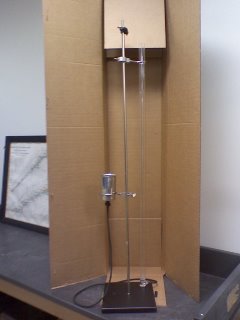
Here's a photo of the assembled resonance apparatus. The tube is quite long, meaning we should be able to get lots of standing waves in the tube for a large variety of tuning forks. I cheated a little bit with the photo by choosing an angle that does not draw attention to the lean of the rod. One of the features that was kind of nice about this apparatus is that the bottom of the tube has a peg which fits into a small hole in the base to keep the tube well positioned. Also, this apparatus includes a clamp for holding a tuning fork above the resonance tube. The clamp is just a right angle clamp, which was a little disappointing that it wasn't anything more specialized, but it will be interesting to see if the clamp works well to hold the tuning fork while the fork is vibrating.
After setting up the mid-range model, I unpacked the economy model. The contents of the shipping box are shown in the following photo.
It may be hard to tell from the photo, but there was an excessive amount of packaging for this kit. All of the pictured components were in a single box stuffed with packing paper. The base and the tube/rod came in separate boxes. And the bag with all of the clamps and reservoir were in a plastic bag, which was so tightly taped shut that I had to destroy the bag just to free its contents. (On Earth Day, of all days...)
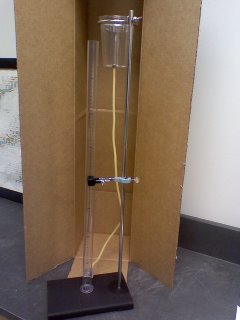
After I made it through all of the layers of packaging, assembly of the economy model was as easy as the mid-range model. The tube is held to the rod by a test tube clamp and there is no clamp for the tuning fork.
The economy model uses what is essentially a large plastic cup (complete with the SOLO logo on the bottom) for the water reservoir. One wonders how much abuse the reservoir will be able to stand. I suppose that if it is damaged, replacement would not be too difficult or costly.
The economy model does not have a peg on the bottom to help keep the tube in place on the base. like the mid-range model does.
Also, the economy model is significantly (~50%) shorter.
Here is a photo of the two models side-by-side for comparison:
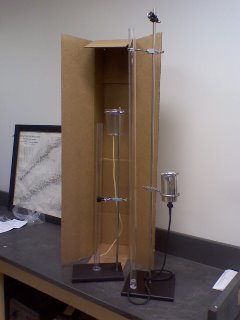
You can easily see the difference in the height of the two. Also, the lean of the longer tube is more apparent when comparing the two.
The real question is how do the two compare in terms of using them to do experiments. I haven't had a chance to try them out yet, but I have made some observations from putting them together. The real question is: What do you get by spending the extra $200 to go from the economy model to the mid-range model?
From what I have seen you get the following benefits:
- Longer tube, meaning a wider range of frequencies to work with.
- Sturdier water reservoir.
- Peg in the base to better hold the tube in the apparatus
- Clamp to hold the tuning fork on the rod
- The machining of the hose connections is clearly of a higher quality. (Need closeup photo to show.)
- Shorter tube means experiments could potentially be done on the lab table, instead of on floor.
- Less expensive components means lower costs for maintenance.
- The smaller size may be easier to store.
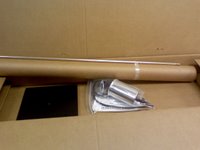
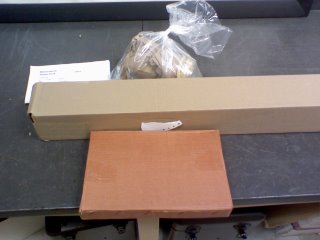
No comments:
Post a Comment